|
|
Advertisement:
|
|
Intel QX6700 Quad-Core CPU |
|
Join the community - in the OCAU Forums!
|
Benchmark Results Continued
The same pattern can be observed in all our gaming tests: None of the 3D games we were running can take advantage of more than 2 cores. The QX6700 is therefore not better performing than its dual core counterpart E6700 running at the same frequency. Again we can see that the X6800 comes out as the winner, because of its higher frequency. It has to be noted though that the differences between all 4 CPU were too small to be actually noticeable when gaming. The “3DMark” graphic score shows the QX6700 around 9% ahead of the E6700. This is however almost completely due to the massively better CPU score which is part of the total score. The “3DMark” result details (not shown) confirm this: The graphic subtests show that the QX6700 system is not producing more frames per second than the E6700.

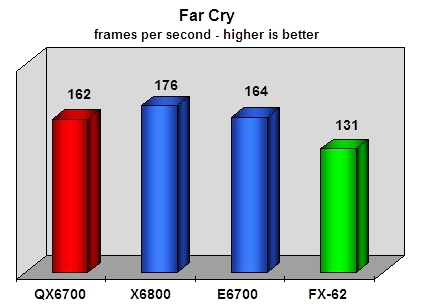

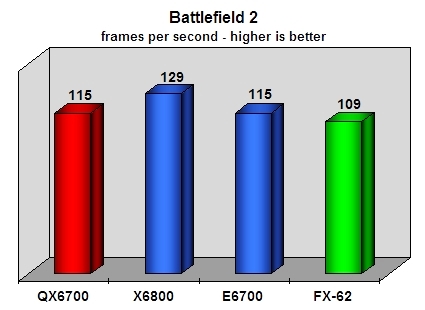
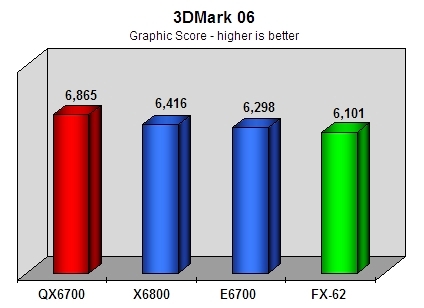
The situation changes dramatically when multithreaded applications are running. In particular 3D rendering software is taking advantage of a quad-core CPU because rendering can easily split down into parallel running threads. The QX6700 is running the “Cinebench 9.5” rendering benchmark a massive 60% better than the X6700 and still 50% better than the X6800. Similar in “3ds Max 8.0”: The QX6700 was rendering around 45% faster than the E6700. Rendering 6 pictures (80 MB) with “Photoshop CS” took 25% less time with the QX6700 than with the E6700. MP3 encoding with “Lame” is not faster with a QX6700, but we saw a huge advantage in video compression and encoding. The QX6700 was running “DivX” almost 40% faster than the E6700 and still 32% faster than the X6800 although the processor frequency is 300 MHz lower. High-definition video compression and encoding with “MainConcept H.264” was also done around 40% faster with the QX6700 than with the E6700.

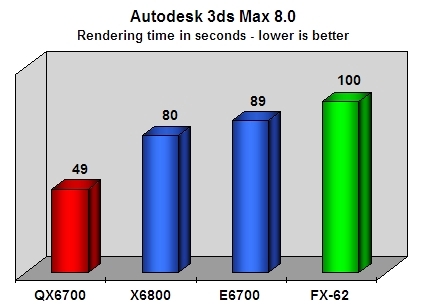
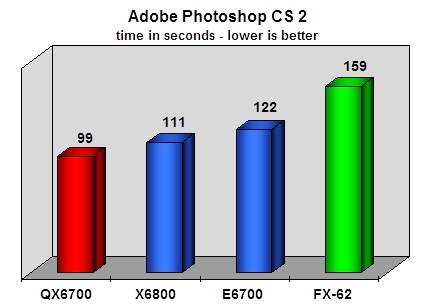
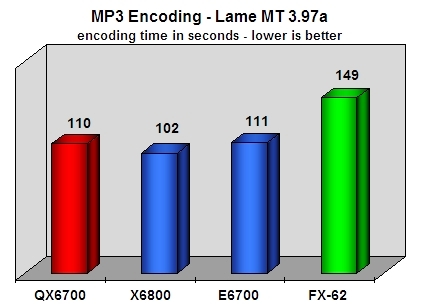
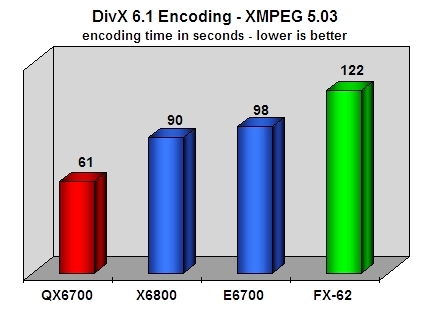
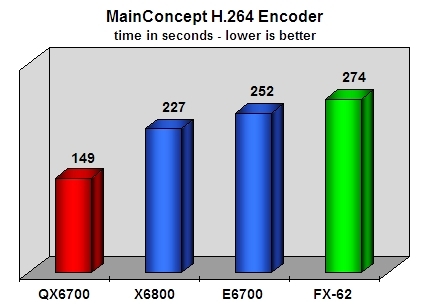
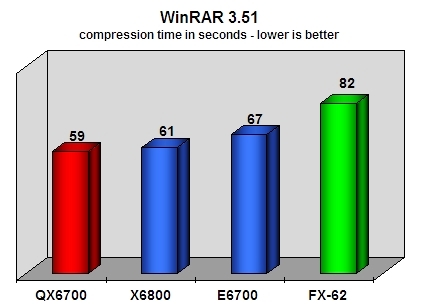
We arranged 2 multitasking scenarios and found that when running 2 jobs like “Lame” and “WinRAR” in parallel the QX6700 shows little advantage over the E6700. Apparently 2 parallel running, single threaded applications are not benefiting from 4 cores. As expected the situation changes when 4 jobs are running: The QX6700 was outrunning the dual-core “Core 2 Duo” CPUs by a wide margin when executing “Lame”, “WinRar”, “3ds Max”, and “Photoshop” in parallel: It was around 30% faster than the E6700, and still 25% faster than the X6800. It was amazing to see that even when running 4 demanding jobs in parallel the system remained completely responsive giving us the feeling that we could throw another 4 applications at it.
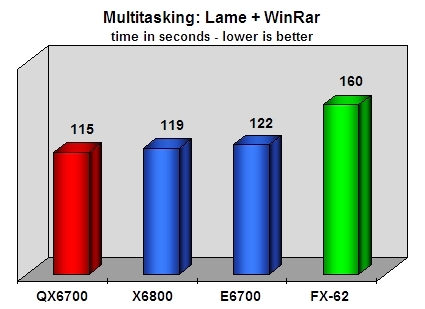
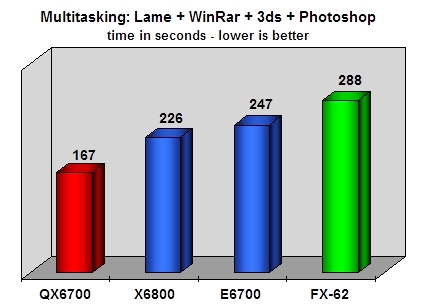
|
|
Advertisement:
All original content copyright James Rolfe.
All rights reserved. No reproduction allowed without written permission.
Interested in advertising on OCAU? Contact us for info.
|

|


